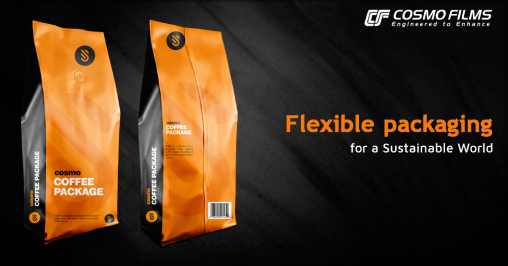Love to hear from you!
Get in touch.

In the last few years, sustainable products have become the top most priority for consumers. The staggering growth of consumer awareness about sustainability, and frequent dialogues on social responsibility have pushed brand owners to do away with traditional packaging methods. The global mood to reduce negative environmental effects of packaging married with technological innovations have driven brands to reduce material usage, use recyclable material in packaging, and develop the use of other sustainable materials. Flexible packaging was born out of the urgent need to address environmental issues and reduce waste, but at the same time carry out the functions of traditional packaging. According to the report “The Future of Flexible Packaging to 2022”, flexible packaging sales were valued at $219.5 billion in 2016, and were predicted to reach $282.6 billion by 2022. The figures do not come as a surprise given that today flexible packaging is widely preferred in consumer and electronic goods to cosmetics and pharmaceutical industries.
Flexible packaging uses the best characteristics of film, paper & aluminium foil and allows its shape to be changed readily. Flexible packages are typically bags, pouches, liners, seals, sleeves, carded packaging and sample packets. However, the packaging industry is witnessing the use of flexible packaging in many innovative ways. Flexible packaging solutions range from single-use pouches, or even from zip locks to resealable closures. Here is why conscious brand owners prefer flexible packaging:
Despite the many advantages flexible packaging boasts of, there are a few challenges as well. Many times, recycled plastic is considered as raw material for flexible packaging. While the idea itself is fantastic, recycled plastic can carry odours that will eventually affect the product. Hence, more research and development is required in the field of flexible packaging to make it even more sustainable. Another big challenge in the use of flexible packaging is the education of consumers. Although it is true that consumers are increasingly demanding far more sustainable packaging solutions, it is hard to tell whether consumers can actually differentiate sustainable packaging from non-sustainable. Once the products are on the shelf, its ultimately the visual and shelf appeal and not the environmental benefits that make the product sell. Hence, a lot of work needs to be done to increase consumer awareness.
There is no doubt that flexible packaging is the most sought-after packaging type for brands these days. They are durable, offer great printability and aesthetics, and above all use less resources and reduce costs during production. Flexible packaging not only help brands make their stand clear regarding sustainability, but it also educates consumers to reuse and recycle wherever possible – and this is a huge step towards a more sustainable lifestyle.
Featured Post
Love to hear from you!
Get in touch.